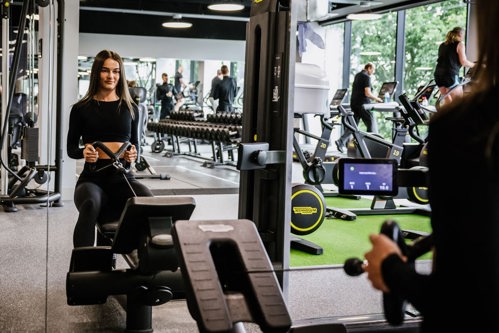Weight Lifting For Teenagers: Is It Safe?
We know that exercise is good for us, but is weight lifting and resistance training safe for teenagers? The short answer is yes, it is! But let's dive a little deeper and see what the experts have to say.
Looking to join a gym? Check out the Village Gym teenager gym memberships for ages 14 to 15, and young person gym memberships for ages 16 to 22. We also have junior gym memberships, for children up to & including 13 years of age, which adult members can apply for.
What Do The Professionals Say?
A lot of research confirms that resistance training is safe for teenagers when done correctly. For example, research published in the British Journal of Sports Medicine tells us resistance training "[...] is a safe and effective way to improve [...] physical performance in healthy children and adolescents when appropriately prescribed and supervised".
As well as that, The American Academy Of Pediatrics tells us that youth resistance training is "safe, effective, and enjoyable" with "[...] proper exercise technique and qualified supervision", and that "[...] most injuries reported from resistance training occur on home gym equipment with unsafe behaviour in unsupervised settings".
The Benefits of Weight Lifting for Teenagers
Not only is resistance training safe for teenagers, it also comes with benefits. By lifting weights, teenagers can improve their muscle strength, power, endurance, and body composition.
Not only this, but according to the Faculty of Sport and Exercise Medicine UK, resistance and weight training can have a positive impact on self-esteem, cardiac function and even general outlook on life.

Safety First! Our tips for teenage weight lifting
While resistance training is safe for teenagers, it's important to have proper supervision and progression to avoid any injuries. Parents, coaches and trainers need to provide proper guidance and supervision to help teenagers get the most out of their workouts safely.
Lifting weights safely involves using proper technique, progression, and supervision. Here are some of our tips for weight training safely at the gym:
-
Start with light weights:
When starting a weightlifting program, it is important to start with light weights and gradually increase the weight as strength improves. This will help teenagers avoid injury and build up strength gradually.
Be sure to avoid exercises that put unnecessary stress on teenage growth plates (especially on the spine), find exercises that promote proper form and muscle balance instead.
-
Progress gradually:
It is important to progress gradually in a weightlifting program. This means gradually increasing the weight, reps, or sets being done. This will help teenagers to avoid injury and get the most out of their workout.
-
Warm up and cool down:
Before lifting weights, it's important to warm up muscles with some light cardio and dynamic stretching. After lifting, it's important to cool down with some static stretching. This will help to reduce the risk of injury and muscle soreness.
-
Get supervision:
It is recommended to have a qualified personal trainer or coach to supervise teenage gym goers, to ensure proper technique and progression is used, especially if new to weightlifting.
-
Use proper form:
Using proper form is essential for safety and effectiveness. Proper form includes keeping a straight back, an engaged core, and keeping joints in a neutral position. And proper rests in between sets.
-
Learn proper technique:
The growth plates in children’s and teenage’s growing bones aren’t fully fused until late the late teens and beyond, depending on the person. That means it's important for teenagers to follow proper technique and progression, so they don’t overload the joints or bones which are weaker while growing.
Teenagers can learn proper technique by consulting a qualified personal trainer, this is the best approach to avoid any injuries or issues, but watching instructional videos or reading exercise guides can help too.
-
Stop when it doesn’t feel right:
If there is any pain or discomfort while lifting weights, stop immediately and seek guidance from a qualified personal trainer or doctor.
The Final Word
Resistance training and weights are a safe and effective form of exercise for teenagers, but it’s really important that the right technique and progressions are used.
It's time to put aside any doubts and let our teens lift some weights! Just make sure they're doing it safely and under proper guidance.
For more information on our teenager, young person visit our family gym memberships page here. View our rules for children and junior gym membership here.
Frequently Asked Questions
Does lifting weights stunt growth?
There is little scientific evidence to support the claim that lifting weights stunts growth in teenagers, and it is usually refuted by modern research. However, it is important to avoid excessive training, and ensure proper technique, progression and supervision.
What is the best age to start working out with weights?
It’s OK to start strength training as early as 7 to 8 years old, if they are interested and mature enough to follow directions.
Should a teenager go to the gym?
We think that the gym is a great hobby for teenagers, but we do strongly recommend professional support to ensure injuries are avoided and growing bones aren’t overloaded. At Village Gym, 14 to 15 year olds must be accompanied to the gym by a parent or guardian.


